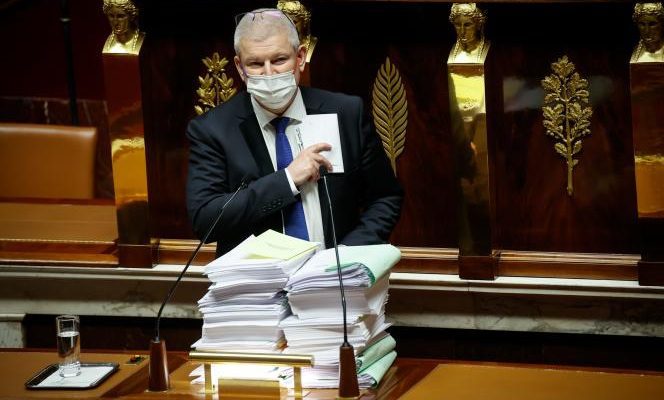When Emmanuel Macron receives the members of the citizens’ convention on the end of life at the Elysée on Monday, April 3, he will have in one hand their opinion, given the day before, which should propose the opening under conditions to a “active assistance in dying”, and, in the other, the report of the first parliamentary evaluation mission of the Claeys-Leonetti law of February 2, 2016, creating new rights for end-of-life patients. The nineteen deputies taking part in this mission published their report on Wednesday 29 March. They draw up a long list of difficulties in implementing the law, without however proposing legislative changes.
Deep and continuous sedation until death (SPCJD), “flagship measure” of the 2016 law, is too rarely applied: this is the main conclusion of the mission chaired by Olivier Falorni, deputy (MoDem) of Charente-Maritime , alongside two rapporteurs, Caroline Fiat, deputy (La France insoumise) for Meurthe-et-Moselle, and Didier Martin, deputy (Renaissance) for Côte-d’Or. “The low use of this device, considered as a real step forward during the adoption of the law, can only raise questions”, they write. Would the SPCJD be difficult to apply? The deputies are careful not to decide, preferring to be satisfied with advocating measures for its deployment.
Practiced before 2016, the SPCJD is erected by the authors of the law, Alain Claeys (Socialist Party) and Jean Leonetti (Les Républicains), deputies at the time, to the rank of a right open to end-of-life patients. This is to give the possibility of “sleep before you die so as not to suffer”to use Mr. Leonetti’s expression.
France becomes the only country to give legal status to this practice. But it frames it, because in the spirit of the law, the SPCJD must not become a lethal gesture. The High Authority for Health indicates, in 2018, that this type of sedation applies to patients whose vital prognosis is engaged ” short term “when ” the death (…) is expected within a few hours or a few days”. Before 2016, no directive made its implementation conditional on the supposed imminence of death.
51 patients concerned
The recognition of this right has, paradoxically, not given rise to any figures on its application. The number of SPCJD practiced remains unknown. The act is not specifically coded in the program for the medicalization of information systems of the Ministry of Health. The different types of sedation, “proportionate” – therefore transient – or “deep and continuous” – therefore definitive – are referenced together in the official database. This lack of traceability is ” problem “, insists the report, which calls for the creation “specific coding” for SPCJDs.
You have 58.29% of this article left to read. The following is for subscribers only.
